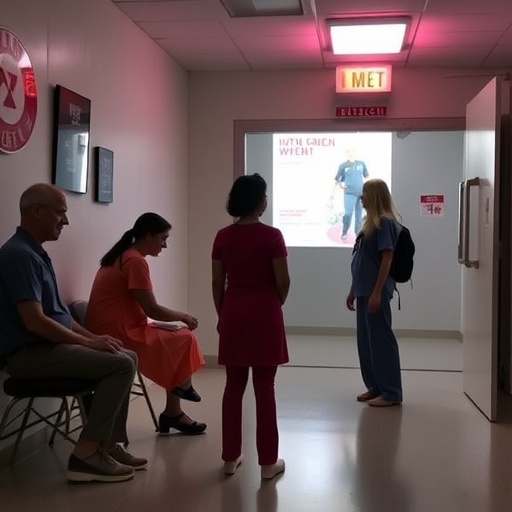The application of gentle cooling and warming currents inside the ear canal can provide relief for migraine sufferers, new research at the University of Kent has helped show.
Volunteers in the study who had a history of migraines experienced a significant reduction in the number of migraines they normally experienced in a month after using a technique known as caloric vestibular stimulation (CVS).
CVS activates the balance organs which are believed to alter activity in the area of the brain, known as the brainstem, associated with the onset of migraine headaches.
Dr David Wilkinson, of the University's School of Psychology, helped lead the randomised, double-blinded, placebo-controlled trial. It was carried out across the US and UK, involving 81 volunteers with a history of between four and 14 migraine attacks per month.
The volunteers self-administered caloric vestibular stimulation daily for 20 minutes over a period of three months. The thermal currents were delivered by aluminium earpieces seated within padded headphones, powered and controlled by a small, hand-held device.
The findings demonstrated that the treatment reduced both the number of migraine days per month (the active treatment group experienced a reduction of 3.6 days compared to 0.9 days in the placebo group) as well as headache pain and the consequent need for migraine abortive prescription medications.
Dr Wilkinson said the results indicated that vestibular stimulation 'may address the existing need for new preventative therapies for episodic migraine'.
The findings were presented at the American Headache Society's annual meeting in June, where Professor Peter Goadsby, Chair of its Science Committee, said that 'many patients want non-drug options, so developing a non-drug therapy such as this may provide that.'
A second, expanded study will begin this summer, involving another collaboration between the University of Kent and US medical device company Scion Neurostim, who produced the CVS delivery device and will again fund the study, as well as local GP surgeries and specialist headache centres across the UK and US.
###
The research, entitled Preventing episodic migraine with caloric vestibular stimulation: a randomized trial, (David Wilkinson, University of Kent; et al.) was published 27 June in the journal Headache. See: http://onlinelibrary.wiley.com/doi/10.1111/head.13120/abstract
For interview requests or more details of the event, contact Martin Herrema at the University of Kent Press Office.
Tel: 01227 823581/01634 888879
Email: [email protected]
News releases can also be found at http://www.kent.ac.uk/news
University of Kent on Twitter: http://twitter.com/UniKent
Notes to editor
Established in 1965, the University of Kent — the UK's European university — now has almost 20,000 students across campuses or study centres at Canterbury, Medway, Tonbridge, Brussels, Paris, Athens and Rome.
It has been ranked: 23rd in the Guardian University Guide 2016; 23rd in the Times and Sunday Times University Guide 2016; and 22nd in the Complete University Guide 2015.
In the Times Higher Education (THE) World University Rankings 2015-16, Kent is in the top 10% of the world's leading universities for international outlook and 66th in its table of the most international universities in the world. The THE also ranked the University as 20th in its 'Table of Tables' 2016.
Kent is ranked 17th in the UK for research intensity (REF 2014). It has world-leading research in all subjects and 97% of its research is deemed by the REF to be of international quality.
In the National Student Survey 2016, Kent achieved the fourth highest score for overall student satisfaction, out of all publicly funded, multi-faculty universities. Along with the universities of East Anglia and Essex, Kent is a member of the Eastern Arc Research Consortium (http://www.kent.ac.uk/about/partnerships/eastern-arc.html).
The University is worth £0.7 billion to the economy of the south east and supports more than 7,800 jobs in the region. Student off-campus spend contributes £293.3m and 2,532 full-time-equivalent jobs to those totals. In 2014, Kent received its second Queen's Anniversary Prize for Higher and Further Education.
Media Contact
Martin Herrema
[email protected]
@UniKent
http://www.kent.ac.uk
############
Story Source: Materials provided by Scienmag




